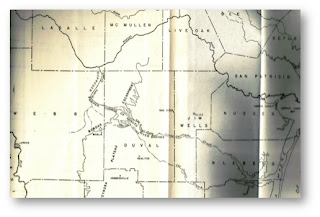Escandon's early interest in the area
“[Settlers] have been extending themselves with ranches and haciendas, not only in the immediacy of said settlements but also in almost all the other shore of the Rio Grande del Norte and even further, nearly up to the Nueces River, about 20 leagues before the Presidio de la Bahía del Espirito Santo whose land is good for pastures and planting; notwithstanding that I understand the inspectors set it down as useless and sterile, an error that I attribute to their quickly believing someone who, without their having been in the region, gave them a report because they did not see it.” José de Escandón In 1746, the Spanish government decided that it was time to begin colonizing the area known as the Seno Mexicano, including South Texas. The presence of the French in the area around Goliad and in East Texas prompted Spain to begin colonizing the area. The Spanish commissioned Don Jose de Escandon to establish the Provincia Nuevo Santander in Northern Mexico and along the Rio Grande River.
